Generating Packages and Documents

It is the final step in the Compliance / Cyber section of the In A Box platform. In this section, users can generate packages and documents for a system. As a reminder, the templates that may be generated are listed in Compliance / Cyber section.
It is important to have sufficient tokens to generate packages and documents. If you need more tokens please reach out to our sales team or contact your Ask Sage Administrator.
Table of contents
User Interface Overview of the Generate Package Section
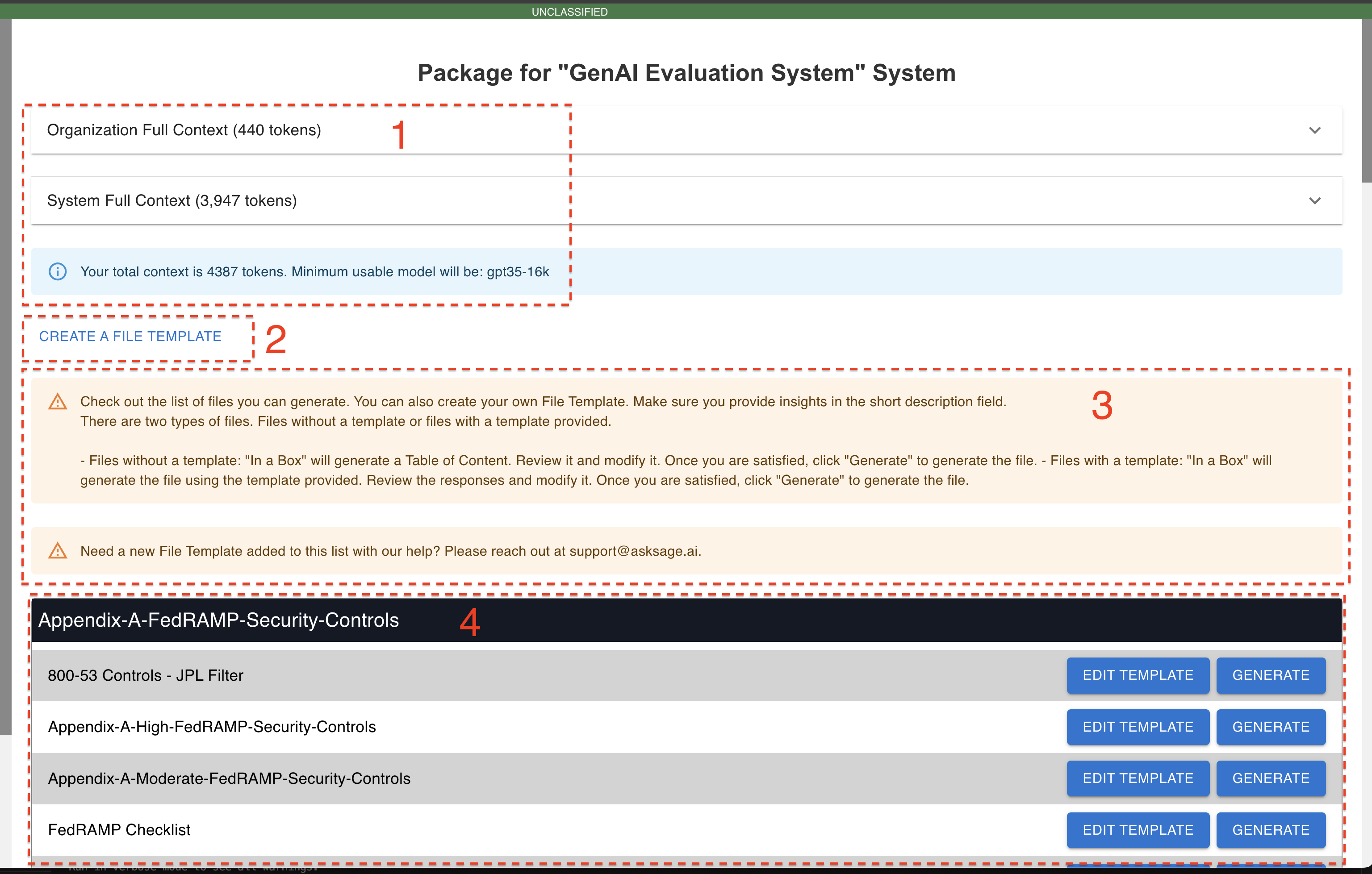
Organization and System Context
The Organization and System Context section is where users can view the organization and system context that was created in the Manage Context sections in the prior sections. As mentioned the information provided will be utilized to generate documentation for the system and it will reference this context in order to generate accurate and relevant information.

Create a New Template
The Create a New Template section is where users can formulate a new template that may be utilized to generate a specific document for the system. We will cover this section in more detail in a future update to the documentation. Stay tuned for more information.
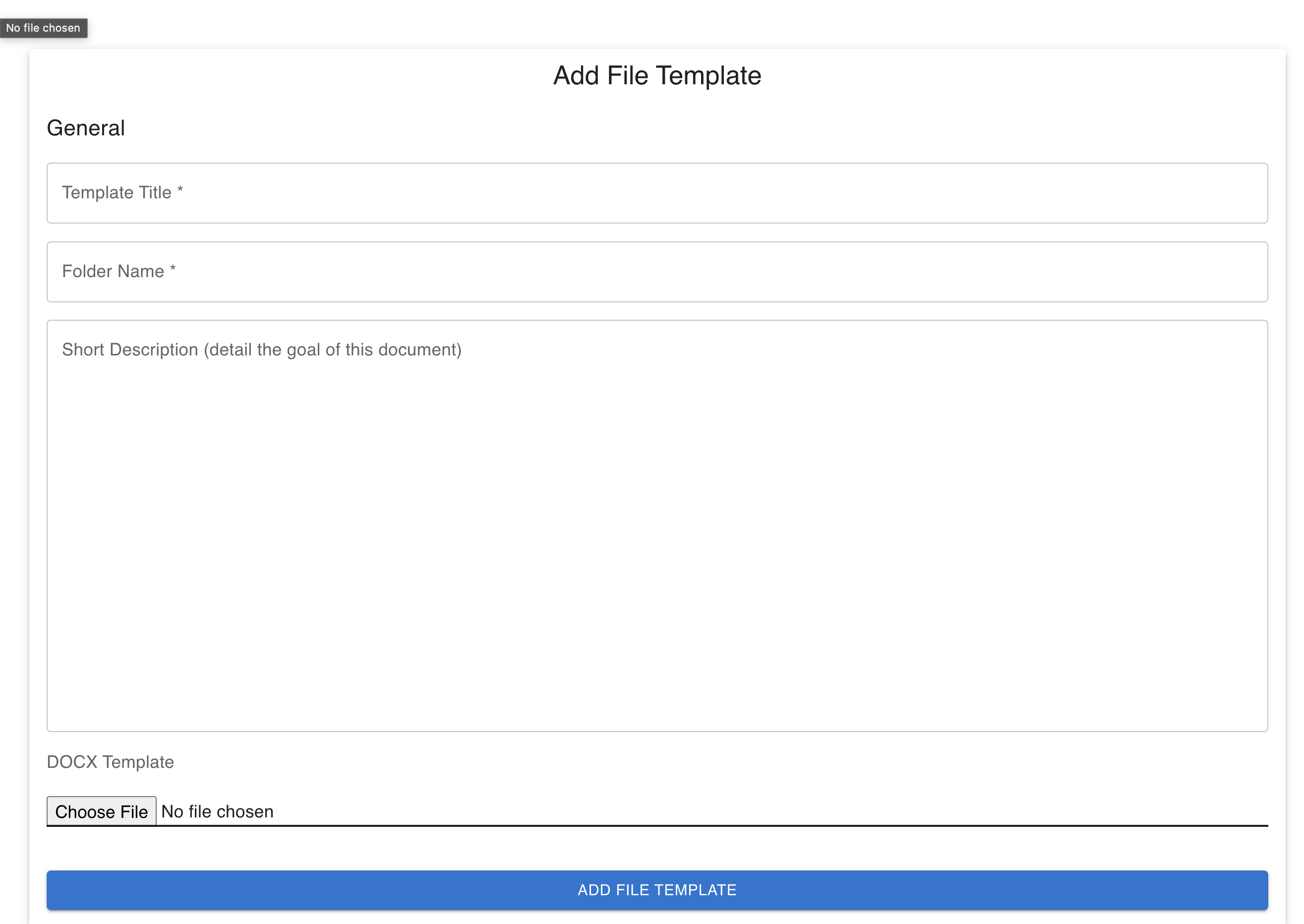
Highlighted Banners and Messages
Any time there is a message or banner displayed on the platform, it is important to read and understand the message. The message or banner may contain important information that may affect the generation of documents for the system or organization.
Folder Categories and Templates
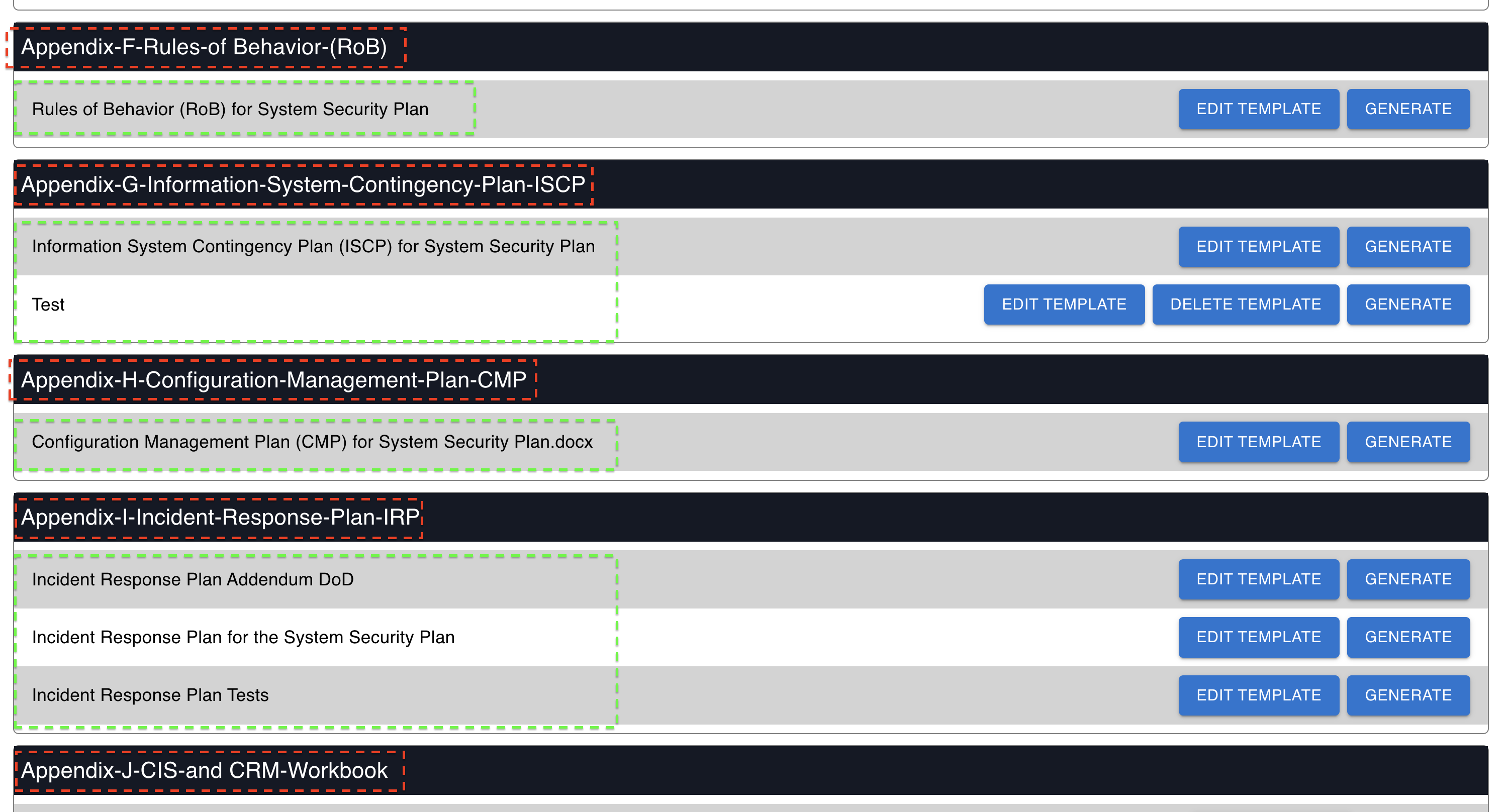
The UI will display a series of tables, where each table is known as a Folder. In each folder there will be a series of templates that may be generated for the system.
Each template will have two buttons at the start, which are Edit Template and Generate. The Edit Template button will allow users to edit some templates (as a few are not editable because they are set to fill out industry standard templates) and the Generate button which will allow users to generate the template for the system.
After a template is generated, there will be an additional button Open Last Generated which will allow users to view the last generated template for the system.
Lastly, if you create a new template, there will be a Delete Template button that will allow you to delete the template from In A Box.
Now that we have covered the UI of the Generate Package section, let’s move on to generating a package or document.
Generating a Package or Document
There are two types of templates that are setup to be generated in the In A Box platform.
Non-Editable Templates:
These templates are for the most part non-editable and are used to generate industry standard templates. Using these templates results in the auto filling of the industry standard templates (such as NIST 800-53, FedRAMP, etc.) based on the system information provided. In A Box will automatically check off boxes and fill in blanks based on the provided system information.
These type of templates will typically utilize the most volume of tokens, therefore pay attention to the estimated token volume required to generate the document. For example: 
These templates may require hours to generate, so it is important to plan accordingly and make sure you have a stable internet connection to avoid any interruptions.
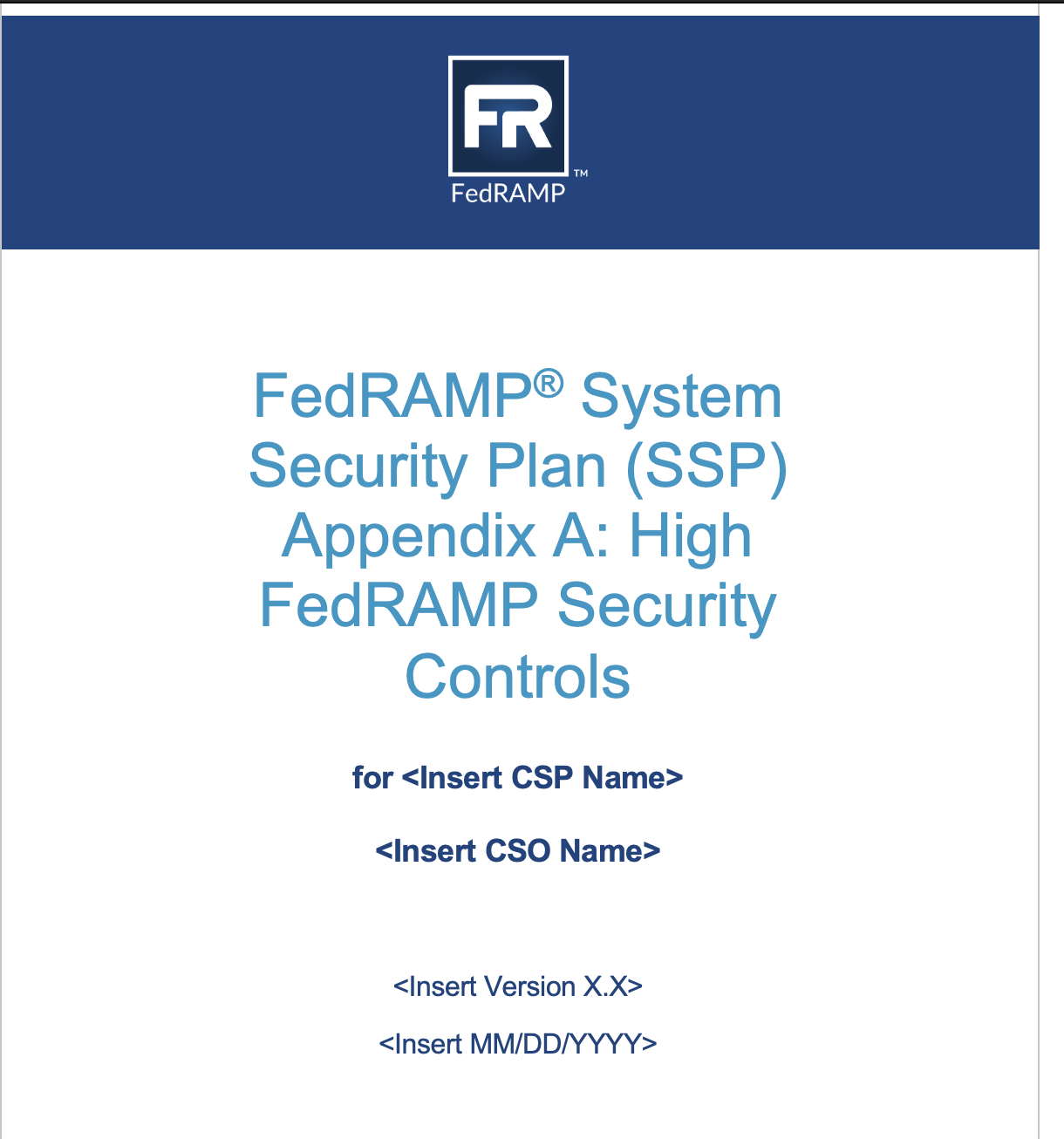
When selecting the Generate button, users will see a two or single step process to generate the document as shown in the images below:
Single Step Process:

In the single step process, users do not typically need to review or add any additional information. Just click Generate and Download to initiate the generation process.
Two Step Process:
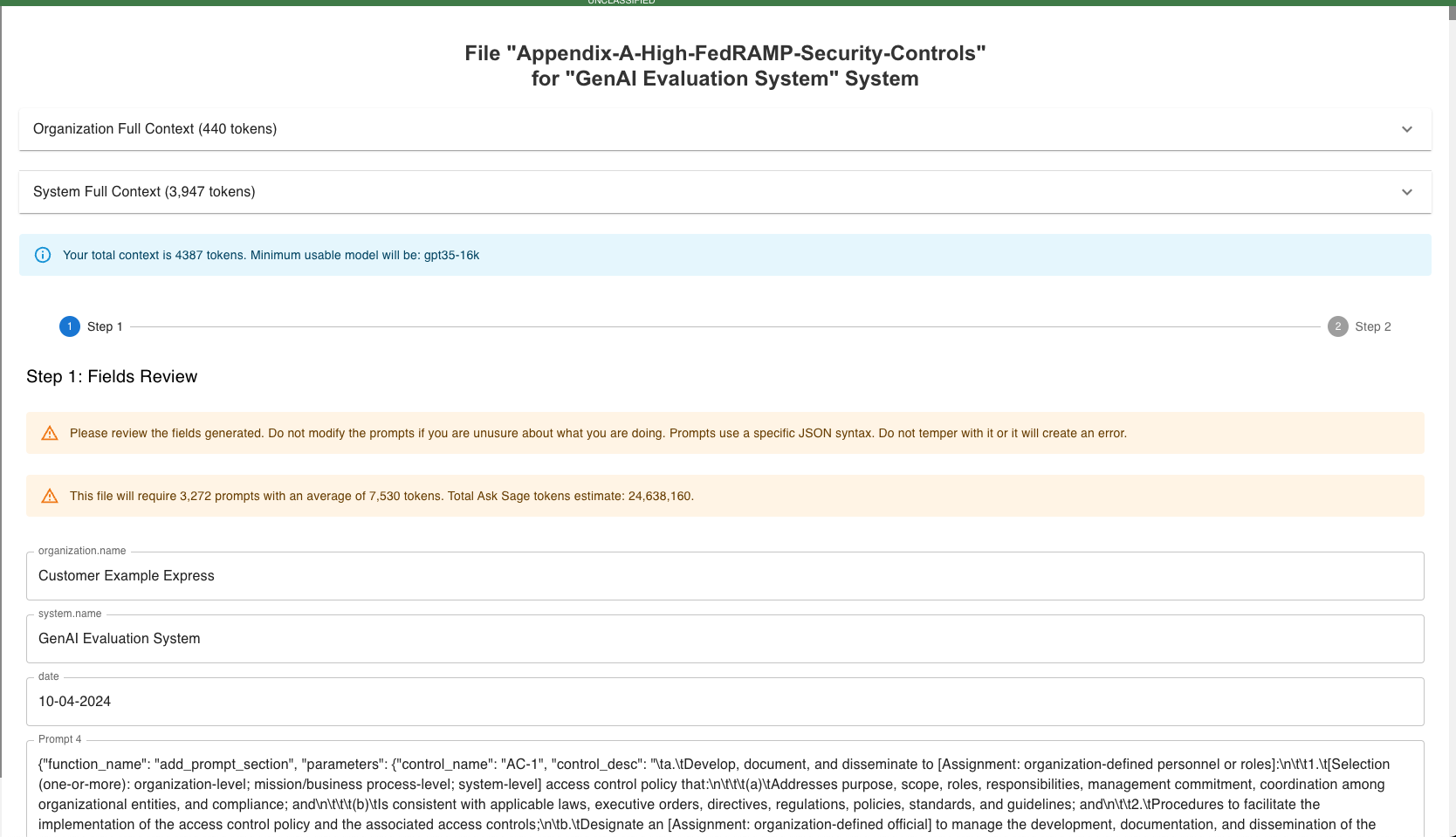
For the two-step process, users may be required to enter additional information and/or have the option to review individual prompts that will fill in the template. Note, modifications of prompts should only be done if the user knows what they are doing.
Editable Templates:
These templates are editable and can be modified by the user, typically used for generating general context documents such as System Security Plan (SSP), Risk Assessment, etc.
Custom templates also fall under this category.
These templates are identified after selecting the Generate button and the UI displays a series of 4 steps to generate the document.
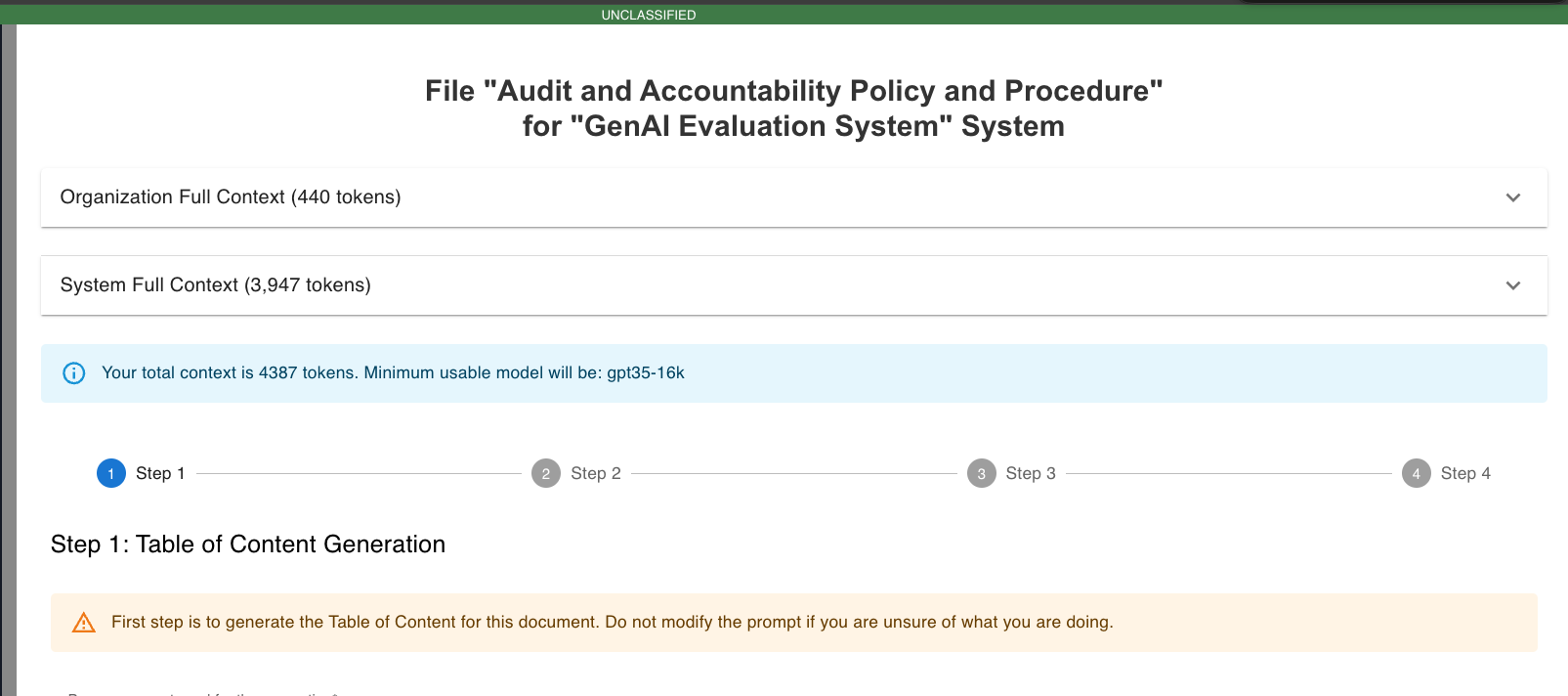
Step 1) Table of Content Generation

Start with the Table of Content Generation section, which is divided into three sections: Persona prompt used for the generation, Use data from Ask Sage datasets (optional), and System Prompt for TOC.
- The
Persona prompt used for the generationis where users can select the persona that will be used to generate the document.In A Boxis already pre-configured with a persona prompt that would be used to generate the document, but users can select a different persona if needed. - The
Use data from Ask Sage datasets (optional)is where users can select additional data from theAsk Sagedatasetsto be used in the generation of the document. This is optional and not required to generate the document. - The
System Prompt for TOCis where a prompt is auto configured to combine thetemplate,Persona,Organization,Systeminformation, and the optional additional data fromAsk Sagedatasetsto define the creation of aTable of Contentfor the document. - After reviewing the
System Prompt for TOC, users can click theGenerate Table of Contentbutton to proceed to the next step.
The System Prompt for TOC can be modified by the user, but it is recommended to leave it as is unless the user knows what they are doing.
Step 2) Table of Content Review
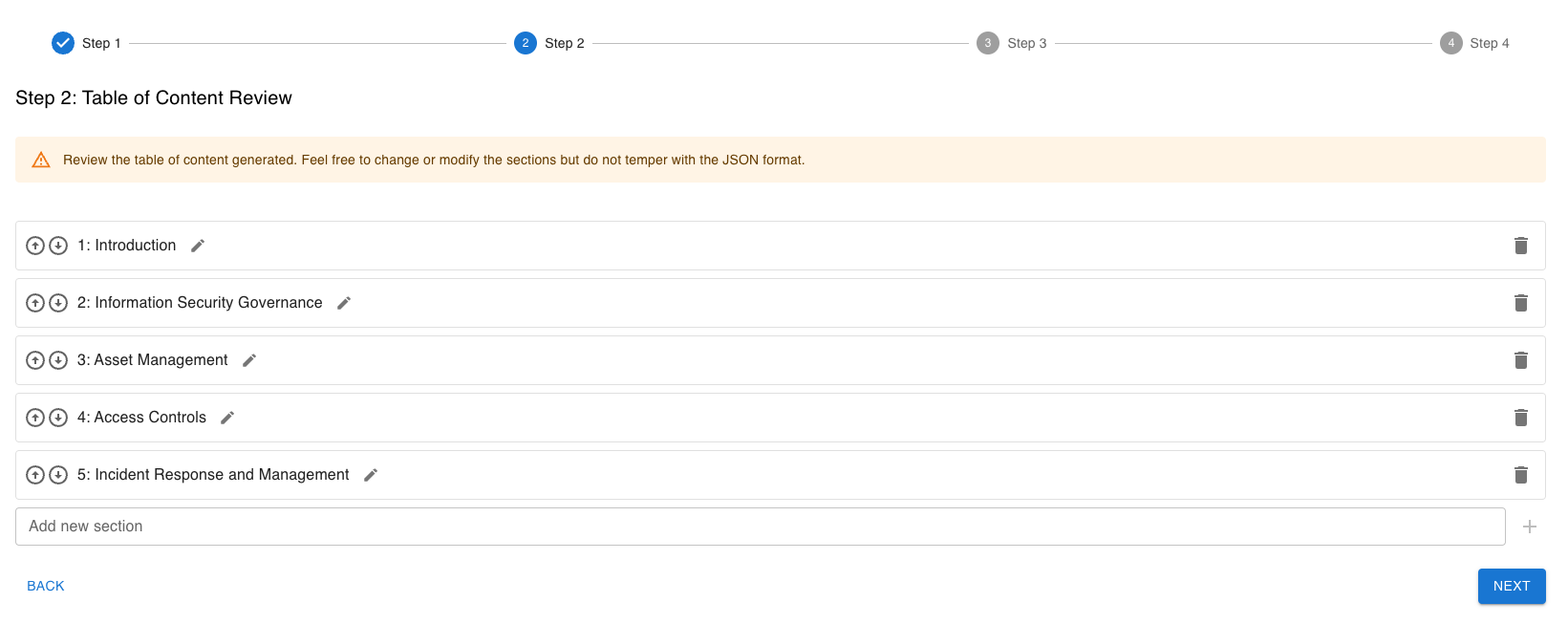
In the Table of Content Review section, users can review the Table of Content that was generated in the previous step. Users can review the Table of Content and make any modifications if needed such as renaming sections, adding new sections, removing sections and reordering sections.
After reviewing the Table of Content, users can click the Generate Sections button to proceed to the next step.
Step 3) Generating Sections

In the Generating Sections section, users can review the sections that are generated based on the Table of Content that was reviewed in the previous step. Users can review the sections and make any modifications if needed such as adding content, and removing content. However, it is recommended to leave the sections as is unless the user knows what they are doing.
Step 4) Sections Review
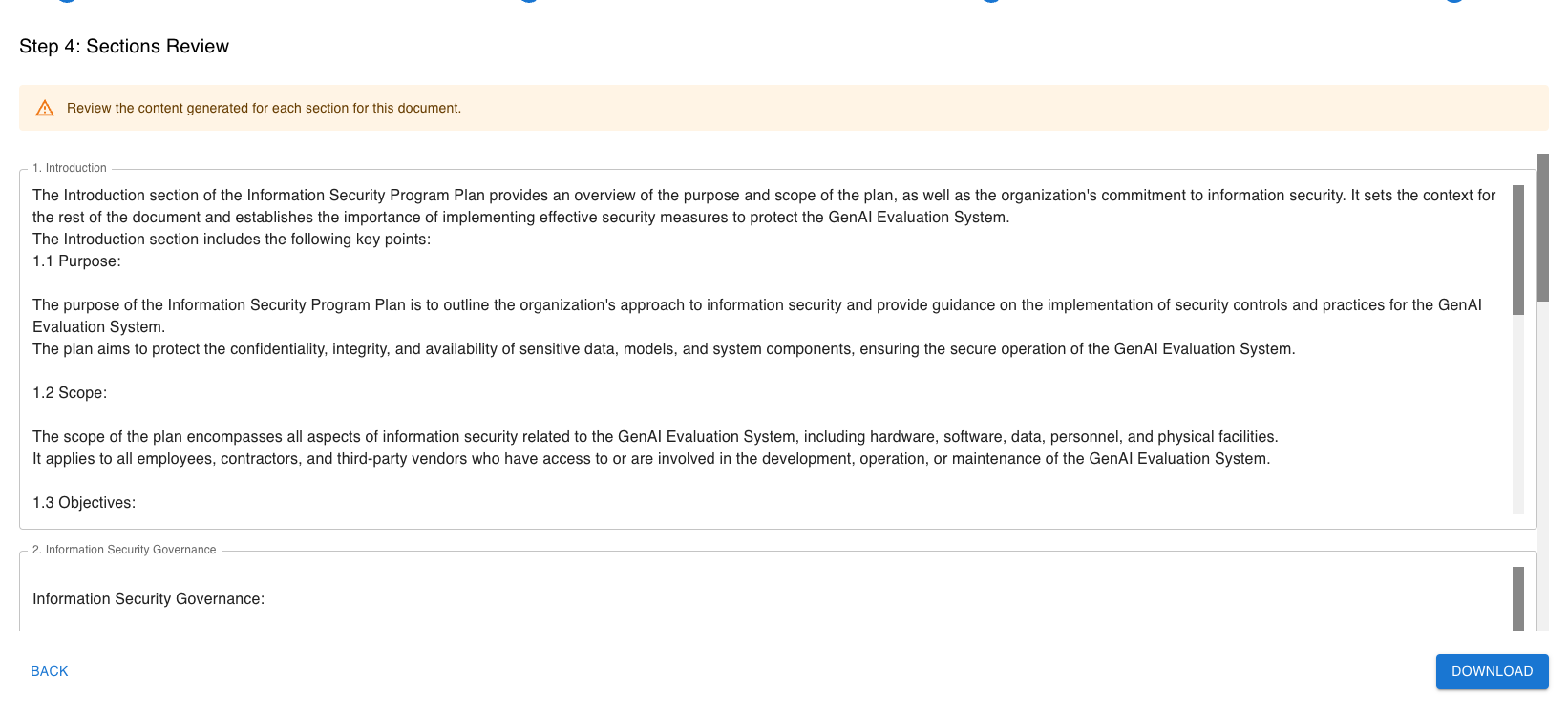
In the Sections Review section, users can review the sections that were generated in the previous step and make any modifications if needed.
After reviewing the sections, users can click the Download button to download the document.
After downloading a document, users need to update the entire ‘Table of Content’ section to reflect the content that was generated.

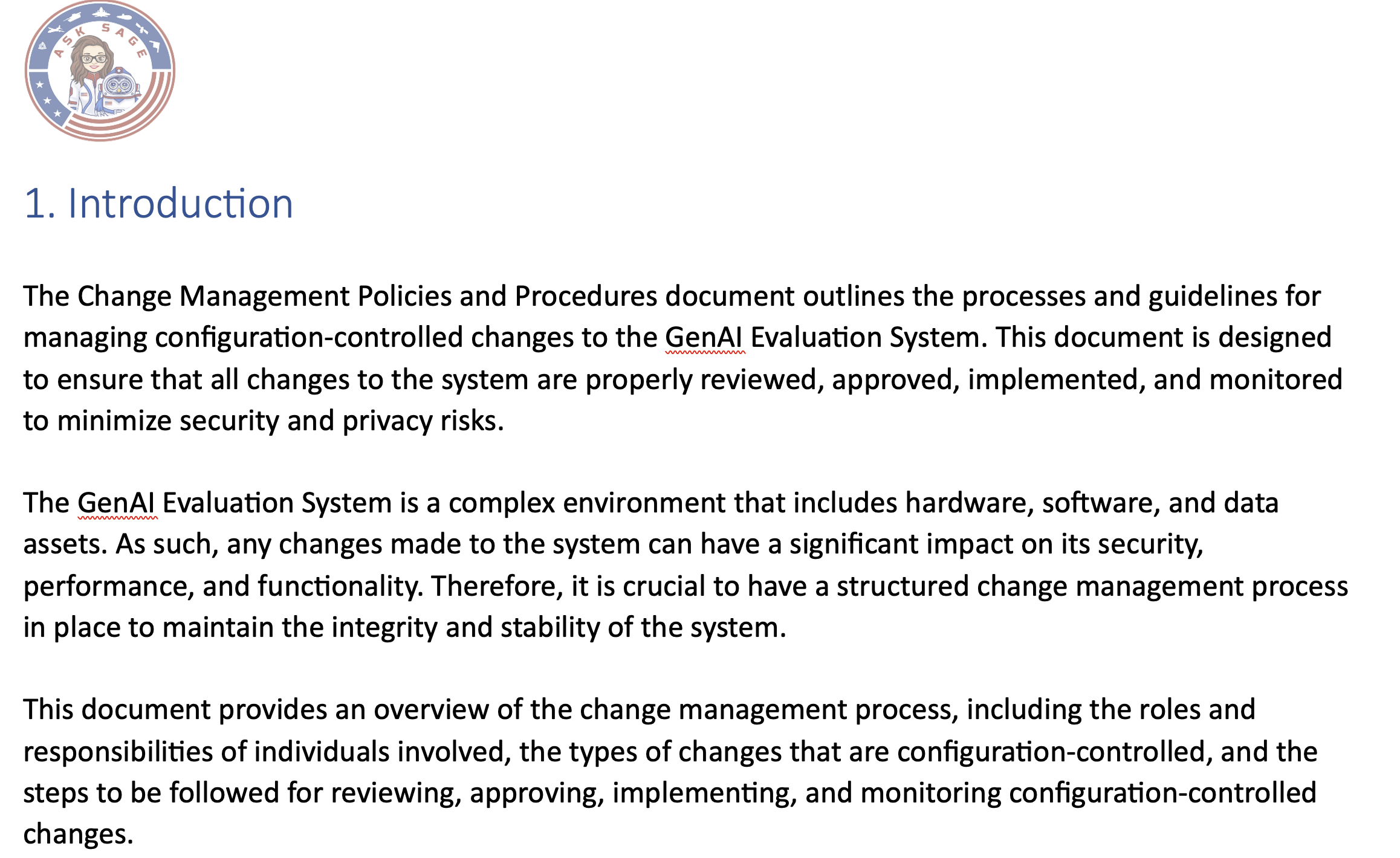
Reviewing the Generated Package or Document
All generated documents from the In A Box platform will be in a .docx format. Users can open the document in any word processing software such as Microsoft Word, Google Docs, etc. We recommend using Microsoft Word to open the document as it will provide the best experience.
After opening the document, users can review the document to ensure that all the information is accurate and relevant to the system. If there are any discrepancies, identify them and make the necessary corrections.
Hallucinations may occur if information is missing from your organization or system context. If you notice any hallucinations, please review the organization and system context to ensure that all the information is accurate and relevant to the system.
Typically, errors occur only when data sources are not up-to-date or accurate.